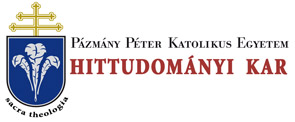Folia Theologica et Canonica 1. 23/15 (2012)
IUS CANONICUM - Szabolcs Anzelm Szuromi, Biblical Texts and Medieval Ecclesiastical Discipline up to the Decretum Gratiani
140 SZABOLCS ANZELM SZUROMI, O.PRAEM. which, even among the changing frameworks, has provided for constancy in the Church's institutionalized life throughout history.2 Holy Scripture and Tradition, the sacraments, the evangelizing mission, and the other forms of sanctification are so fundamental to the Church, that they determine her work and action, and the bonds that bind her members together.3 Thus the Catholic Church, as a visible unity, appears in an institutionally organized form. In order to preserve this unity, and to promote the Church’s particular aims, canonical forms have been devised right from the apostolic era. Canon law, as a system of the Church’s disciplinary rules that directs Christ’s faithful (christifideles) “to divine worship, peace, and preserving Christian justice, at last to reach the eternal happiness” (i.e. Schmalzgrueber4), may for this reason actually be considered as “sacred law” (ius sacrum), since its norms promote, directly or indirectly, the sanctification of the individual persons. If we contrast this with the norms regulating the common life of the human community (ius civile), then we may call it in a broad sense divine law (ius divinum), or law bound to the divine law, because a canonical law has a special bond to the divine law (i.e. Lan- celotti5). On the one hand, numerous positive ecclesiastical laws merely formulate the divine law, the force of which no hierarchical level is able to dispense with. On the other hand, even in relation to purely ecclesiastical laws, it must be noted that these have a singular bond with divine law as the means of the observance and application of its content.6 These means were crystallized during the Church's life, first in the customary law of administering the sacraments and proclaiming the Gospel, and then in written form. Therefore, one of the fun2 Cf. Segalla, G., Carisma e istituzione a servizio della carità negli Atti degli Apostoli, Padova 1994. 13. 3 Erdő, P., Theologie des kanonischen Recths, 113-122. 4 Michiels, G., Nonnae generales iuris canonici, I. Lublin 1929. 11. 5 Leges omnes, ac iura omnia in dirigendis humanis actionibus ad bene, beateque vivendum, non aliter se habent, quam habenae, frena, et calcaria ad incitandos, et moderandos gressus, et cursus equorum: unde cum lex iubet alieno abstinere, ab iniuria temperare, neminem denique hominem laedere, contrafacientibusque poenas addir, nobis ac cupiditatibus nostris quasi frena quaedam iniicir, et habens praemit, flagellisque coercet. Cum vero honesta iubet, atque ad ea praemiis nos allicit, naturae humanae ad bonitatem stimulos addit, et calcaria subditur demum cum quaedam benigne indulgere, permittit, vel tolerat, habenas laxat. Sed tamen tam cohibendo, quam incitando, quam etiam indulgendo ad unicum tantum, ac certum finem genus humanum dirigit, nempe ad bene, beateque vivendum. Lancelotti, J. P., Institutiones luris Canonici, quibus ius pontificium singulari methodo, Coloniae 1609. 1050. 6 Cf. Erdő, P., Metodo e storia dei diritto nel quadro delle scienze sacre, in De León, E. - Alvarez de las Asturias, N. (a cura di), La cultura giuridico-canonica Medioevale premesse per un dialogo ecumenico (Pontificia Université della Santa Croce, Monografie giuridiche 22), Milano 2003. 3-22, especially 15-16. Errázuriz, J. C. M., Lo studio della storia nella metodológia ca- nonistica: la rilevanza della nozione di diritto, in De León, E. - Alvarez de las Asturias, N. (a cura di), La cultura giuridico-canonica Medioevale, 109-121, especially 114.
